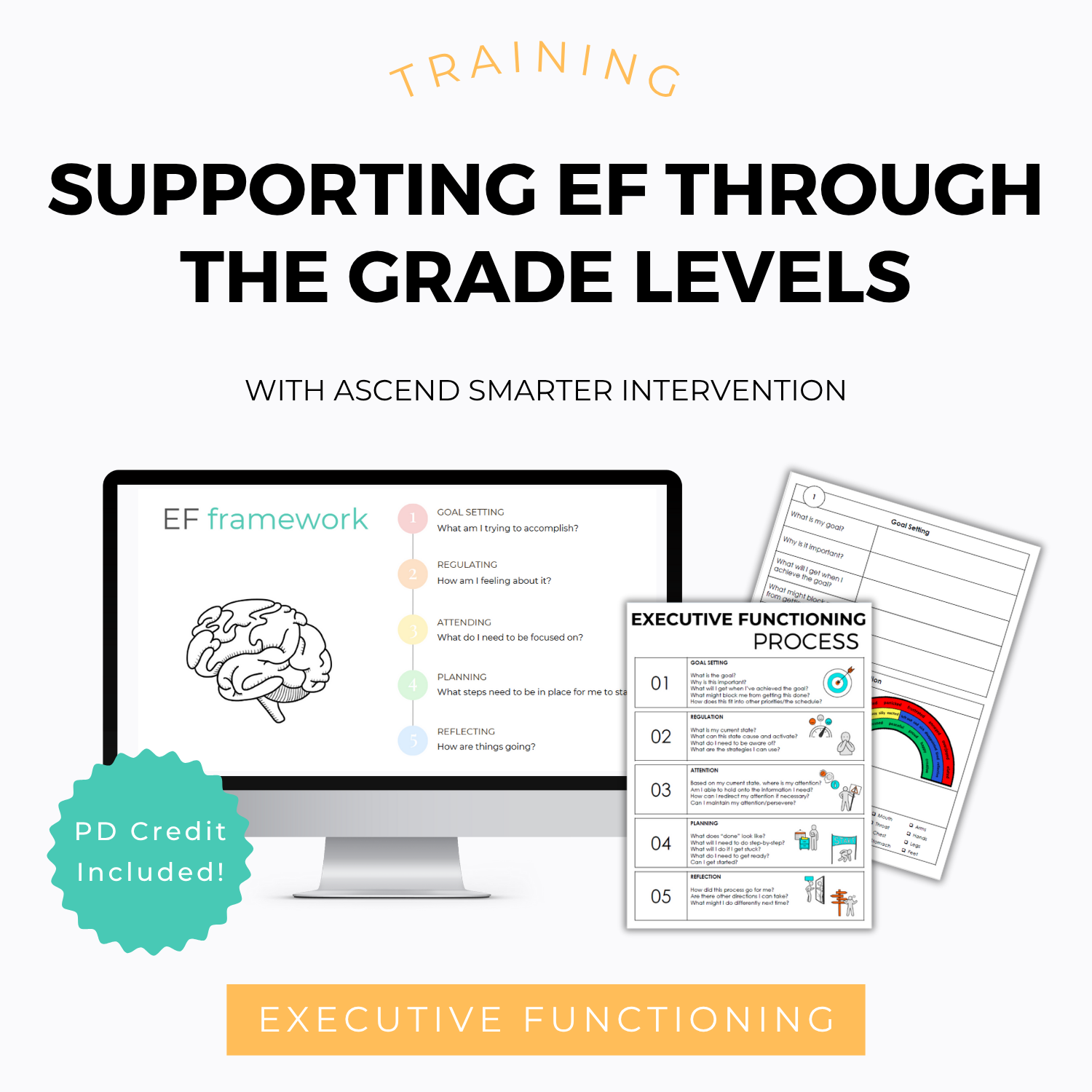Supporting Emotional Regulation in the Classroom - 3 Strategies to Try
We’ve all seen it: a student suddenly shuts down or lashes out over what seems like a small frustration. A group project doesn’t go their way, or they’re asked to redo a task, and within seconds the classroom atmosphere shifts.
Emotional regulation is a key component of executive functioning, but many students haven’t yet developed the tools to manage big feelings in productive ways. For some, even naming their emotions is a challenge.
If you’re noticing emotional outbursts, shutdowns, or heightened anxiety in your students, here are three strategies you can start using today to build emotional awareness and support regulation:
3 Strategies to Try
1. Name the Feeling
Many students (especially in elementary grades or those with language-based challenges) struggle to put words to their emotions. Helping students identify what they’re feeling is the first step in calming their nervous system and building emotional literacy.
Try this:
Use a classroom feelings chart, emotional vocabulary word walls, or simple sentence stems like “I feel ___ because ___.”
2. Teach Communication Tools
Kicking a desk or yelling across the room is communication, just not the kind we want to reinforce. Teaching students how to express themselves appropriately builds long-term self-regulation and strengthens classroom relationships.
Try this:
Introduce tools like a feelings wheel or a 1–5 regulation scale.
Use role-play to model what appropriate emotional expression looks like.
Create a class anchor chart for “What to Do When I Feel Frustrated.”
3. Practice Regulation Strategies
Each student responds to stress differently, some may need quiet time, others may need movement. Helping students discover and access strategies that work for them makes regulation more likely in the moment.
Try this:
Practice regulation tools before students are upset (e.g., deep breathing, counting, or sensory breaks).
Create a calming corner or toolkit students can access when needed.
Encourage students to reflect: “What helped you feel better?”
Supporting emotional regulation doesn’t mean removing all frustration from the learning process. It means equipping students with the tools they need to manage those moments productively.
Want more strategies for building executive functioning skills in the classroom?
Check out our Spotlight PD: Supporting Executive Functioning Through the Grade Levels.
This 1-hour on-demand training gives you a clear, practical framework to support attention, planning, regulation, and goal-setting from kindergarten through high school.
Executive functioning is one of the most talked-about topics in education right now, but most educators are asked to support EF skills without ever being shown how.
This training changes that.
You’ll get a simple 5-step framework, real examples from K–12 classrooms, and ready-to-use tools you can implement right away, without needing a separate curriculum or a total schedule overhaul.
Aligned with research on brain development
Designed for general ed, intervention, special education, or home settings
Includes a printable EF graphic organizer + 1-hour PD certificate

